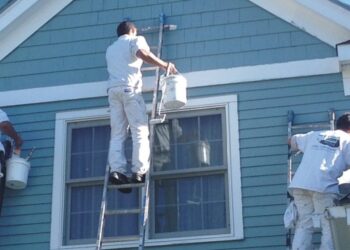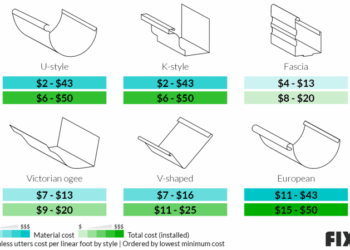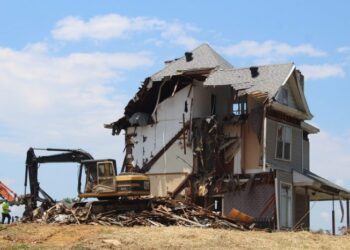Delving into the realm of fire damage restoration services, we uncover the essential reasons why their immediate action is paramount. From preventing further harm to restoring peace of mind, the journey of restoration unfolds with each step revealing its importance in the aftermath of a fire incident.
Exploring the process, types of damage addressed, and financial aspects, this comprehensive guide sheds light on the intricate world of fire damage restoration services.
Importance of Fire Damage Restoration Services
After a fire incident, fire damage restoration services play a crucial role in restoring the affected property back to its pre-fire condition. Ignoring the need for professional restoration services can lead to various risks and complications, making timely restoration essential.
Potential Risks of Not Utilizing Professional Restoration Services
- Smoke and Soot Damage: Without proper cleaning and restoration, smoke and soot residue can cause long-term damage to surfaces and materials, leading to discoloration and corrosion.
- Structural Integrity Issues: Fire can weaken the structure of a building, compromising its stability and safety. Professional restoration can assess and repair structural damage to ensure the building remains secure.
- Health Hazards: Lingering smoke odors and soot particles can pose health risks to occupants, triggering respiratory issues and other health problems. Professional restoration services can effectively eliminate these hazards.
Long-Term Benefits of Timely Fire Damage Restoration
- Preventing Further Damage: Timely restoration can prevent secondary damage caused by water used to extinguish the fire or by the spread of soot and smoke residue.
- Cost-Effective Solutions: Addressing fire damage promptly can help minimize restoration costs in the long run, as delaying repairs can lead to more extensive damage that requires additional resources to fix.
- Rapid Recovery: By swiftly restoring the property after a fire, occupants can return to their normal lives sooner, reducing disruptions and emotional distress caused by the incident.
Process of Fire Damage Restoration
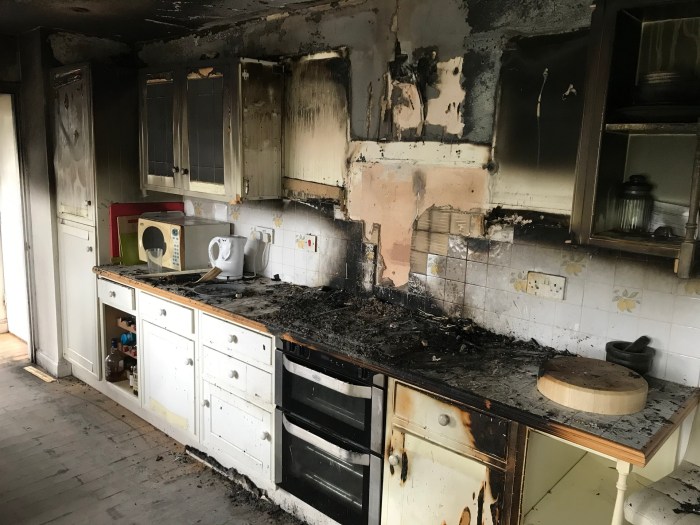
Fire damage restoration services involve a series of crucial steps to restore properties affected by fire incidents. Each step plays a significant role in ensuring the successful recovery of the property and the well-being of its occupants.
Assessment and Inspection
Before any restoration work begins, professionals conduct a thorough assessment and inspection of the property to determine the extent of the damage. This step helps in creating a detailed plan for the restoration process.
Board-Up and Roof Tarping
Securing the property is essential to prevent further damage from external elements. Boarding up windows and doors, and tarping the roof, helps in safeguarding the property during the restoration process.
Water Removal and Drying
Firefighting efforts often leave behind water damage. Professionals use specialized equipment like pumps and dehumidifiers to remove excess water and dry out the affected areas to prevent mold growth.
Soot and Smoke Removal
Soot and smoke can cause lingering odors and damage surfaces. Techniques such as dry cleaning, wet cleaning, and thermal fogging are used to eliminate soot residue and smoke odor from the property.
Cleaning and Sanitizing
All affected surfaces, belongings, and HVAC systems are thoroughly cleaned and sanitized to remove any remaining traces of soot, smoke, or water damage. This step is crucial for ensuring a safe and healthy environment post-restoration.
Restoration and Reconstruction
The final step involves restoring the property to its pre-fire condition. This may include repairs, reconstruction, and replacing damaged materials to complete the restoration process.
Types of Damage Addressed
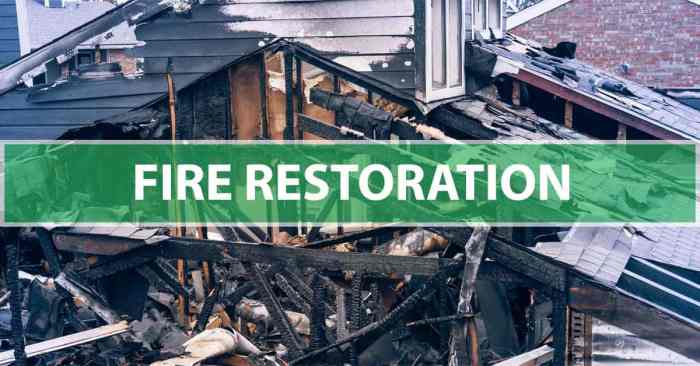
Fire damage restoration services address various types of damage caused by a fire incident. These professionals are trained to assess and prioritize restoration based on the type and extent of damage to ensure a comprehensive recovery process.
Smoke Damage
Smoke damage is a common issue after a fire and can permeate walls, furniture, and personal belongings. Professionals use specialized equipment and techniques to remove smoke residue and odors effectively. Challenges may arise when smoke damage is extensive, requiring thorough cleaning and deodorization to eliminate all traces of smoke.
Water Damage
Water damage is often a result of firefighting efforts and can lead to mold growth and structural issues if not addressed promptly. Professionals use drying and dehumidification methods to mitigate water damage and prevent further problems. Challenges can occur when water seeps into hidden areas, causing long-term damage if not properly dried and restored.
Soot Damage
Soot is a byproduct of incomplete combustion during a fire and can coat surfaces with a black residue. Professionals use specialized cleaning techniques to remove soot and prevent staining and corrosion on various materials. Challenges may arise when dealing with delicate surfaces that require gentle cleaning to avoid further damage.
Structural Damage
Structural damage can compromise the stability of a building after a fire. Professionals assess the extent of structural damage and prioritize repairs to ensure the safety of the property. Challenges can arise when structural damage is severe, requiring extensive reconstruction and reinforcement to restore the building to its pre-fire condition.
Insurance and Financial Aspects
In the aftermath of a fire, dealing with insurance coverage and the financial aspects of fire damage restoration can be overwhelming for homeowners. Understanding how insurance typically applies to fire damage restoration services is crucial in navigating this process effectively.
Insurance Coverage for Fire Damage Restoration
- Most homeowner's insurance policies cover fire damage restoration services, including repairs, cleanup, and rebuilding.
- It is essential to review your policy to understand the extent of coverage and any limitations or exclusions that may apply.
- Documenting the damage thoroughly and providing this information to your insurance company is key to ensuring a smooth claims process.
Challenges and Misunderstandings
- One common challenge homeowners face is underestimating the cost of fire damage restoration, leading to potential financial strain.
- Another misunderstanding is assuming that all aspects of fire damage restoration are covered by insurance, when in reality, certain services may not be included.
- Delays in processing claims and disputes over coverage can also create additional stress for homeowners.
Tips for Navigating Financial Aspects
- Consulting with a reputable fire damage restoration company can help you understand the scope of work needed and estimate costs accurately.
- Keeping detailed records of all communication with your insurance company, including photos and receipts, can expedite the claims process.
- Seeking multiple estimates and comparing services can ensure you are getting a fair deal and not overpaying for restoration work.
Closure
As we conclude our exploration of fire damage restoration services, it becomes evident that timely intervention and professional expertise play a crucial role in mitigating the impact of fire incidents. From assessing damage to navigating insurance claims, the road to recovery is paved with challenges and triumphs, highlighting the significance of these services in restoring what was lost.
FAQ Section
How soon should I contact a fire damage restoration service after a fire incident?
It is advisable to contact a fire damage restoration service immediately to minimize further damage and begin the restoration process promptly.
What specialized equipment is used during fire damage restoration?
Professionals often use equipment such as dehumidifiers, air movers, ozone generators, and thermal foggers to address different aspects of fire damage.
How does insurance coverage typically apply to fire damage restoration services?
Insurance coverage for fire damage restoration services usually depends on the policy, but it often includes coverage for restoration costs up to a certain limit.


